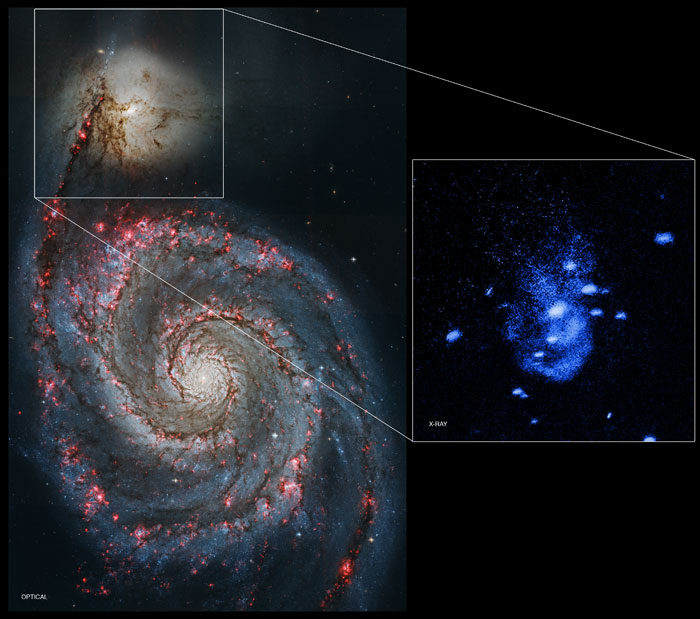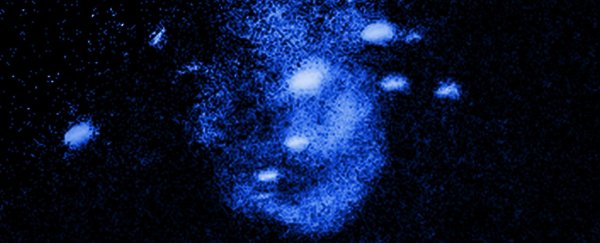Scientists have discovered evidence of a powerful galactic blast produced by a comparatively nearby supermassive black hole located some 26 million light-years away from Earth.
The black hole, centred in a small galaxy called NGC 5195, is the nearest of its kind to Earth undergoing such violent outbursts, which the researchers have likened to a kind of galactic indigestion, if you will.
"For an analogy, astronomers often refer to black holes as 'eating' stars and gas. Apparently, black holes can also burp after their meal," said Eric Schlegel of the University of Texas at San Antonio. "Our observation is important because this behaviour would likely happen very often in the early Universe, altering the evolution of galaxies. It is common for big black holes to expel gas outward, but rare to have such a close, resolved view of these events."
Evidence of the blasts was detected in the form of two arcs of X-ray emission close to the centre of NGC 5195, which the team detected using NASA's Chandra X-ray Observatory.
 Credit: Eric Schlegel/University of Texas at San Antonio
Credit: Eric Schlegel/University of Texas at San Antonio
"We think these arcs represent fossils from two enormous blasts when the black hole expelled material outward into the galaxy," said one of the team, Christine Jones of the Harvard-Smithsonian Centre for Astrophysics. "This activity is likely to have had a big effect on the galactic landscape."
Just beyond the outer X-ray arc, the scientists detected the presence of relatively cool hydrogen gas, suggesting that the hotter, X-ray emitting gas had effectively 'snow-plowed' the hydrogen gas outwards from the centre of NGC 5195.
This phenomenon is called 'feedback', and in this instance the scientists believe the outer arc has accumulated enough material in sweeping through the galaxy to trigger the formation of new stars.
"We think that feedback keeps galaxies from becoming too large," said one of the researchers, Marie Machacek. "But at the same time, it can be responsible for how some stars form. This shows that black holes can create, not just destroy."
But the forces behind that creative potential take a long time to build up. The researchers estimate that it would have taken about 1 to 3 million years for the inner arc to reach its current position, and 3 to 6 million years for the outer arc.
The scientists believe the outbursts were caused by NGC 5195 colliding with a larger spiral galaxy – NGC 5194, also known as 'The Whirlpool'. It's suggested this interaction caused gas to be funnelled into the black hole, laying the foundations for a burp so powerful it may actually end up giving birth to new stars.
"The black hole's behaviour may be a local example of events that commonly took place when the universe was much younger," said Schlegel. "That makes this observation potentially very important."
The researchers presented their findings at a meeting of the American Astronomical Society this week, and have submitted their paper to The Astrophysical Journal.
